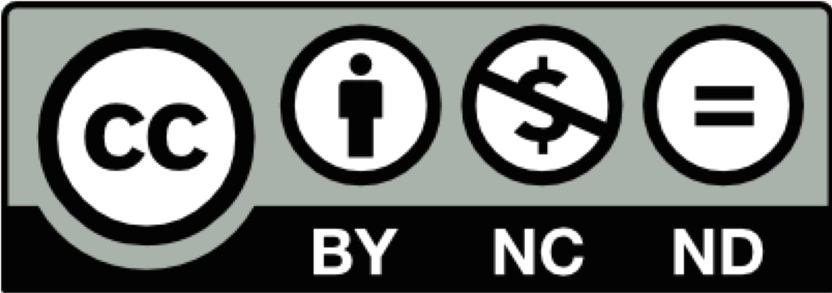The key principles of the foreign policy and diplomatic activity of the European Union, as well as the main bodies that are responsible for its implementation, have been outlined. The analysis of the European External Action Service as the "diplomatic agency" of the Union and the common and distinctive features of the institutional mechanism of diplomacy of national states and EU has also been made. There were used such scientific methods as: comparison, document analysis, structural and functional methods, as well as neo-institutional approach.
The topicality of the theme is determined by the internal processes that take place nowadays in the Ukrainian diplomatic service, in particular, its reformation taking into account the best world experience. Therefore, the studying of European practice, the identification of its positive and negative features will be useful for the reformation process of the Ukrainian diplomatic service. Also, finding out of the peculiarities of the organization of the EU foreign policy activities will provide an opportunity to intensify and improve the effectiveness of cooperation between the EU and Ukraine.
In general, the EEAS organizational structure needs to be improved and advanced, because it is the only suitable body for the current regulation of external relations, while it lacks resources for effective political coordination of a strategic nature. The development of proposals for improvement of the organizational structure of the Service can be the subject of further scientific research. After all, the only coherent vision of the EEAS as an entity that plays a key role in the EU's foreign policy and diplomacy has not been formed yet. First of all, the process of its formation depends on the aspirations of national states to strengthen the position of the EU on the global arena, as well as the ability of the EEAS to contribute to the implementation of these desires, while performing its functions with maximum benefit to the national interests of individual states.
Berezhna K. (2015) European Commission in the institutional mechanism of the European Union. Actual problems of domestic jurisprudence, 6, 126-131.
Creation of the EEAS. European Union External Action. Retrieved from https://eeas.europa.eu/headquarters/headquarters-homepage/3648/creation-eeas_en
Falalayeva, L. (2016) Organizational and legal principles of the functioning of the European Parliament. The journal of the Verkhovna Rada of Ukraine "Viche", 15. Retrieved from http://veche.kiev.ua/journal/5277/
Davydenko, O. (2013) Legal status of the EU High Representative for Foreign Affairs and Security Policy. Legal and Political Sciences. State and Law, 60, 412-418.
Davydenko, O., Falayeva, L. (2012) Features of the Common Foreign and Security Policy of the European Union. Bulletin of the Academy of Advocacy of Ukraine, 2 (24), 82-88.
Hladenko O. (2008) The Lisbon Treaty of the EU in 2007 as a new stage in the evolutionary development of the law of the European Union. The Bulletin of the Central Election Commission, 11, 73-77.
Hnatyuk, M. (2013) A postmodern diplomacy: the role of the diplomatic resources in shaping the EU's international activeness. Scientific notes. Political science, 147, 47-51.
Hrachevskaya, T. (2014) Paradiplomacy as a component of regionalization processes at the present stage. Grani. Political science, 12 (116), 77-82.
Ilyin, N. (2008) Fundamentals of the Law of the European Union. M.: Norma, 2008.
Myrna, N. European Union: Legal and Institutional Principles of Regional Development Policy. Retrieved from http://www.kbuapa.kharkov.ua/e-book/db/2014-1/doc/4/03.pdf
Mogherini appointed Helga Schmid as the Secretary-General of the European External Action Service. European truth. Retrieved from http://www.eurointegration.com.ua/eng/news/2016/06/15/7050838/
Nechayuk, I. (2012) "Euroscepticism" in the context of the deepening European integration and internal reform at the beginning of the XXI century. Scientific works of the historical faculty of Zaporizhya National University, 33, 255-264.
Pankevych, O. & Kilyk, M. (2007) Features of the election of the European Parliament. Bulletin of the Central Election Commission, 2 (8), 89-94.
Pistrakevych, O. (2016) Council of Ministers as a polyfunctional body of the European Union. Bulletin of the National Academy of Public Administration under the President of Ukraine, 2, 192-200.
Ruda, V. (2009) Dynamics of the development of the Common Foreign and Security Policy of the EU countries after 1991. Scientific works. "History",104 (91), 153-159.
Ryaboshtan Y. The Common Foreign and Security Policy of the European Union after the Lisbon Treaty. Political-institutional aspect. Retrieved from http://www.kymu.edu.ua/vmv/v/p04/12_ryabo.pdf
Sarakutsa, M. (2012) Place of the European External Action Service in the system of the European Union bodies. The constitutional state, 15, 283-286.
Strezhneva, M., Rudenkova, D. (2016) European Union: the architecture of foreign policy. M: EMEMO RAN.
Shatun, V. (2014) Defense and Security Policy of the European Union: Formation and Evolution. Scientific papers. Politology, 218 (230), 60-67.
Sheludchenkova, A. (2011) The Common Security and Defense Policy in the European Union. Current Issues of State and Law, 4, 381-387.
Treaty on European Union. Retrieved from http://zakon3.rada.gov.ua/laws/show/994_029
Tsivatyi, V., Shapovalova, O (2013a) Diplomacy and the European External Action Service (EEAS): the political and institutional aspect. "UA Foreign Affairs", 13 (1), 42-45.
Tsivatyi, V., Shapovalova, O (2013b) Diplomacy and the European External Action Service (EEAS): the political and institutional aspect (part 2). "UA Foreign Affairs". Retrieved from http://uaforeignaffairs.com/ua/ekspertna-dumka/view/ article/diplomatij a-ta-j evropeiska-sluzhba-zovnishnoji-dij alnos-1/
The Treaty of Lisbon. Retrieved from http://publications.europa.eu/resource/cellar/688a7a98-3110-4ffe-a6b3-8972d8445325.0007.01/DOC_19
Volosko Y. (2011) A legal status of the President of the European Council of the EU under the Lisbon Treaty of 2007. Visnyk of Lviv University, 28, 132-138.
What we do. European Union External Action. Retrieved from https://eeas.europa.eu/headquarters/headquarters-homepage/2725/what-we-do_en
Yakovuk, I (2014) European Parliament: the dynamics of legal status. State construction and local self-government, 27, 62-76.
Varkhov G. (2013) Families of the political parties of the European Parliament: principles of functioning and ideological peculiarities. Prykarpattya Bulletin of the NTSh. Opinion, 3 (23), 41-19.
Zonova, T. (2003) The modern model of diplomacy: the origins and prospects for development. Moscow: Russian Political Encyclopedia
